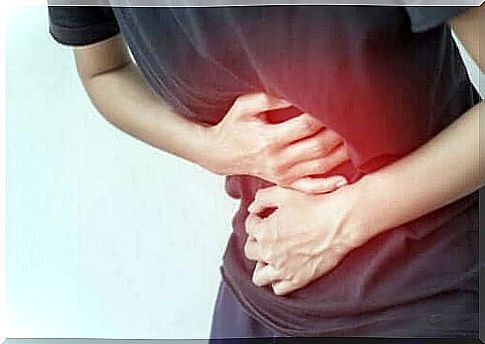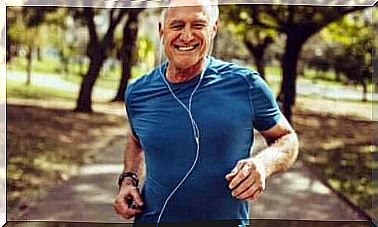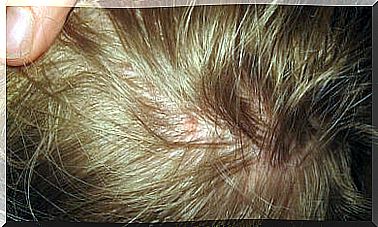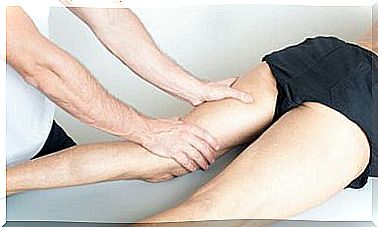Is Walking After Dinner Healthy?

Walking has many health benefits. It is a simple way of exercising that keeps your heart healthy, helps burn calories and can improve your mood. However, is walking after dinner healthy? While some studies suggest this is so, others question it.
In this article, we share with you the possible effects of walking after dinner, as it is a common practice that seems to have both advantages and disadvantages. Keep reading to learn more!
The Potential Benefits of Walking After Dinner
Walking is a low-impact activity that you can easily incorporate into your daily routine. Sometimes people take a walk after dinner. Some studies suggest that this is a very beneficial habit for your body. Discover the benefits below.
1. It May Help Lower Blood Sugar Levels
An important point in diabetes management is regular physical activity. For example, a controlled study of type 2 diabetes patients found that the sugar levels of those who walked after their main meals were lower than those of the patients who walked only once a day.
The results of this study suggest that limiting carbohydrates and taking a short walk for about 10 minutes after each meal can help reduce the chances of excessive spikes in blood sugar.
Another study, published in the journal Diabetes Care , shows that short, periodic periods of walking after meals appear to be an effective way to manage postprandial hyperglycemia in older people.

In contrast, an article in The Journal of Nutrition states that moderate walking after meals has no beneficial effects on blood glucose levels in older adults who are at risk for cardiovascular disease.
2. It is good for heart health
Exercise also plays an important role in keeping your heart healthy. Walking every day can lower your risk of heart disease. According to a study in the journal Current Opinion in Cardiology (English link) is even running cardiovascular health, circulation and blood pressure benefits.
So walking after dinner seems like a good way to take care of your heart. The World Health Organization (WHO) states that children and young people aged 5 to 17 should build up at least 60 minutes of moderate to vigorous physical activity every day.
Adults aged 18-64, on the other hand, should engage in at least 150 minutes of moderate-intensity aerobic activity. That equates to about 30 minutes a day.
3. It Can Help Improve Digestion
As an article in the journal BioMed Research International (link) states, walking after eating could also improve digestion thanks to the anti-inflammatory effects of physical activity.
When you exercise, you help reduce your body’s belly fat and the metabolic changes of lipids and glucose that can reduce inflammation can occur.
In addition, experts believe that exercise facilitates intestinal transit as a result of improved food digestion and absorption of substances, according to a study published in the World Journal of Clinical Cases .
Despite these studies, we must emphasize that more research is needed to confirm the effectiveness of exercise on improving digestion.
Possible side effects
There is not much evidence for the side effects of walking after eating. However, some people experience unpleasant symptoms. We explain them all below.
1. Stomach upset from walking after dinner
Some of these inconveniences include:
- indigestion
- nausea
- vomit
- abdominal bloating
- gas
- diarrhea
- pain
This is due to high carbohydrate intake or difficulty digesting recently eaten foods. To avoid this, you should wait 30 minutes before walking.

2. Gastroesophageal Reflux
According to a study examining the influence of lifestyle in patients with gastroesophageal reflux disease (Spanish link), exercise can also trigger symptoms of reflux (heartburn and acid indigestion). The article says that the more intense the physical activity, the more frequent the reflux episodes.
Tips for walking after dinner
So, to reap the potential benefits of walking after dinner, consider applying the following tips:
- As previous studies have explained, it’s a good idea to walk for between 10 and 15 minutes after each main meal of the day. This allows you to meet WHO recommended levels of physical activity.
- Walk briskly. However, jogging and running are not recommended after-dinner activities. They can be too intense and cause acid reflux or stomach upset.
- The Centers for Disease Control and Prevention of the United States Department of Health and Social Affairs (HHS) state that brisk walking involves about 5 km/h or faster, but without running and without causing large changes in breathing or heart rate. .
- Being comfortable is the key to enjoying your walks. Therefore, you should try to wear loose clothing and shoes that provide good support for your heels.
- Finally, it is very important to drink water to stay hydrated.
Your body’s response to walking after dinner depends on factors such as health, physical condition and how intense the walks you take. If you’ve had a previous illness, it’s best to see your doctor to confirm if you’re fit to begin a moderate or high-intensity exercise routine.









